If you’ve ever seen a bird with an enormous, colorful beak, chances are it was a toucan! These tropical birds are known for their flashy bills and fun personalities, making them super interesting to learn about. This article on toucans facts for kids is packed with awesome details about these feathered friends. One big question many ask is, what is the speciality of toucans? From their unique diet to their weird croaking calls, toucans are full of surprises. Whether you’re doing a school project or just love animals, you’re about to discover what makes toucans truly special.
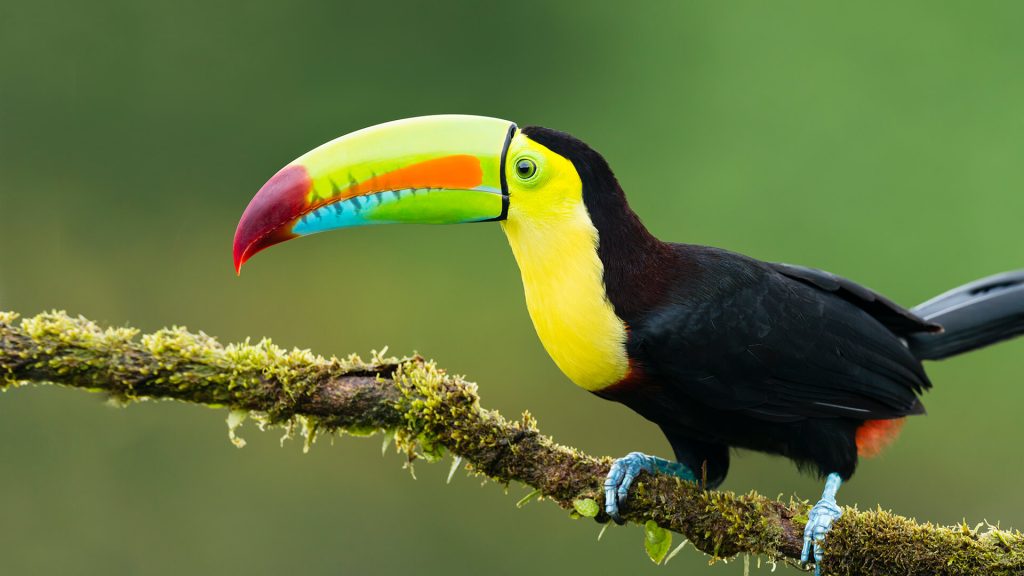
Toucans aren’t just famous for their looks—they play a big role in the rainforest. These birds help spread seeds as they travel from tree to tree eating fruit, which keeps the forest healthy. Their bright beaks, while looking heavy, are actually very light because they’re made of a spongy, hollow material. This lets them reach food in hard-to-get places. Some toucans even use their beaks to scare off other animals. Learning about toucans is fun and important because it teaches us how every animal has a role in nature.
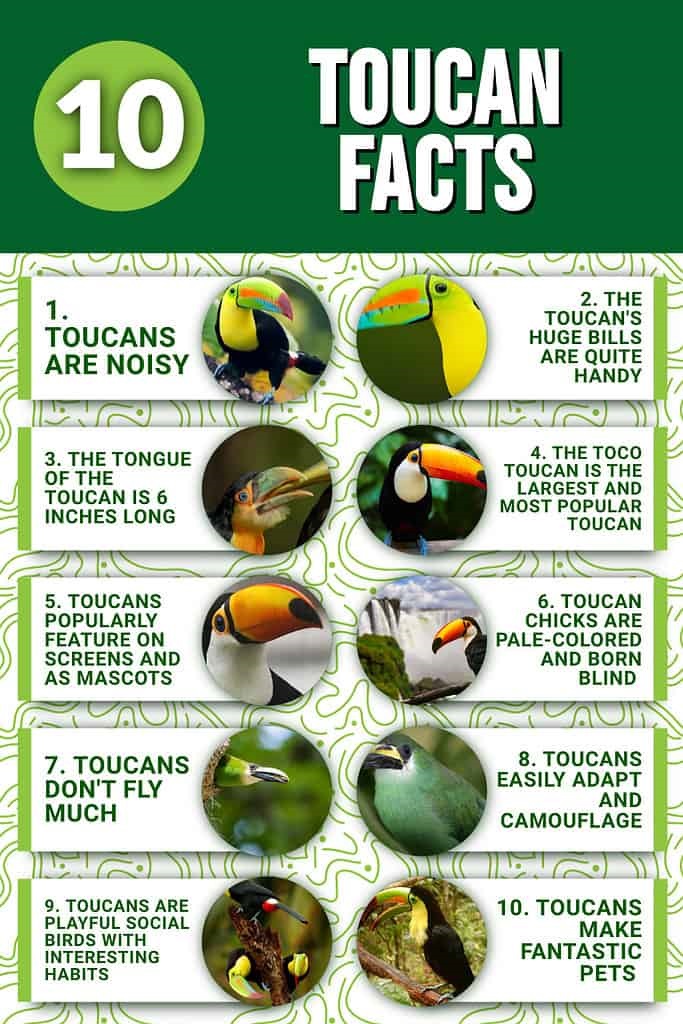
There are over 40 different species of toucans in the world, each with its own style and habits. They live mainly in Central and South America, hiding in the high treetops of rainforests. Toucans are social, noisy, and full of energy. They chirp, croak, bark, and even make growling sounds to talk to each other. With so many cool features, toucans are more than just pretty faces. They are strong, smart, and super helpful birds in the wild. Ready to dive into all the coolest toucan facts? Let’s get started!
Key Takeaways: Toucan Fun in a Nutshell
- Toucans are tropical birds found in Central and South America.
- Their colorful beaks are hollow and help them reach fruit in trees.
- Toucans belong to the bird family Ramphastidae and order Piciformes.
- There are more than 40 species of toucans, including the famous Toco Toucan.
- Toucans eat fruit, insects, small reptiles, and sometimes bird eggs.
- Their loud calls help them communicate in dense rainforest canopies.
- They nest in tree cavities and are often monogamous.
- Toucans face threats like habitat loss and the exotic pet trade.
- Conservation status ranges from Least Concern to Endangered.
- Toucans play an important role in forest ecosystems by spreading seeds.
What Is the Speciality of Toucans?
Colorful Bills and Unique Features
Toucans are most famous for their oversized, brightly colored bills, which can be nearly half the length of their body. This large bill is a lightweight structure made from keratin with a spongy, hollow core. The speciality of toucans is their ability to use this bill for multiple purposes—reaching food, attracting mates, regulating body temperature, and even defending their territory. Despite its size, the beak is not heavy, making it ideal for balance and agility in the treetops. It also helps toucans reach fruit on far branches without moving too much.
| Feature | Description |
|---|---|
| Large Bill | Used for feeding, thermoregulation, and display |
| Colorful Plumage | Helps with camouflage and communication |
| Hollow Beak | Made of keratin, extremely lightweight |
| Zygodactyl Feet | Two toes forward, two back – perfect for tree climbing |
| Long Tongue | Helps move food in their large beak |
Where Do Toucans Live?
Toucans in the Rainforest Canopy
Toucans live high up in the treetops of tropical rainforests. These birds are native to Central and South America, including countries like Brazil, Colombia, Venezuela, Costa Rica, and Ecuador. You’ll find toucans mostly in humid forests like the Amazon Rainforest, but some species also adapt to drier woodlands and plantations. Their preferred habitat is the rainforest canopy, where they can hop from branch to branch using their zygodactyl feet. They build nests in tree cavities and avoid flying long distances, relying on hopping and gliding instead.
| Habitat Type | Details |
|---|---|
| Tropical Rainforest | Dense forests in Central/South America; main habitat |
| Rainforest Canopy | Tree-top zone where toucans move and feed |
| Tree Cavities | Preferred nesting spots |
| Cloud Forests | Some toucans like cooler, misty forests in mountainous areas |
| Human-Modified Areas | Can adapt to farms and gardens near forests |
Toucan Species Around the World
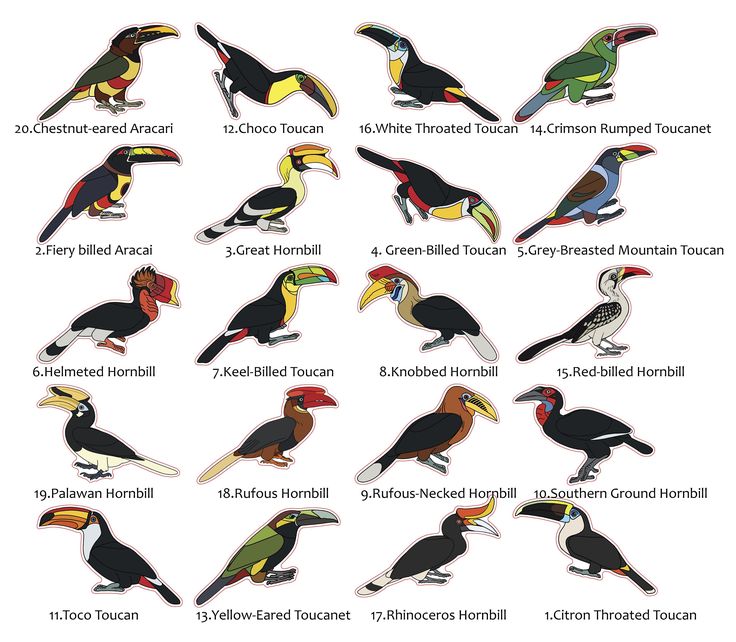
Types of Toucans
There are over 40 known species of toucans, grouped into six genera. The most popular species include the Toco Toucan, Keel-billed Toucan, Aracari, Toucanet, and Mountain Toucan. Each species has its own distinctive bill color, size, and habitat preference. For example, the Toco Toucan (Ramphastos toco) is the largest, while the Aracaris and Toucanets are generally smaller and found in different elevations. Each toucan species also has unique calls, mating behaviors, and social structures.
| Toucan Species | Description |
|---|---|
| Toco Toucan | Largest species, black body, orange beak |
| Keel-billed Toucan | Rainbow-colored bill, smaller size |
| Aracari | Smaller, social species; lives in groups |
| Toucanet | Green plumage; lives in cloud forests |
| Mountain Toucan | Found in high elevations; cooler climate dwellers |
Toucans Diet: What Do They Eat?
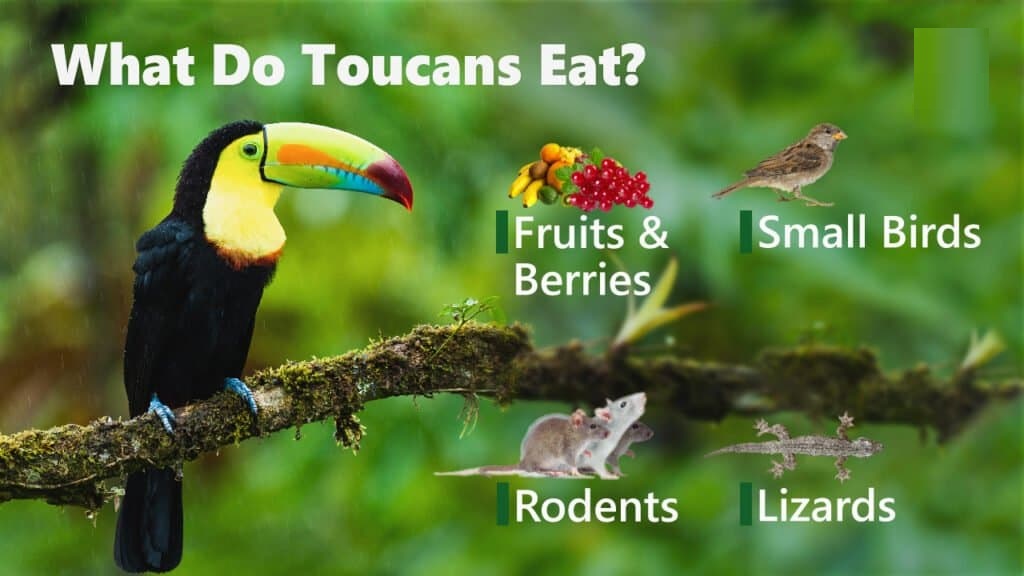
Frugivores with a Varied Palate
Toucans are primarily frugivores, meaning fruit makes up most of their diet. However, they are also opportunistic feeders. Besides fruit, toucans eat insects, bird eggs, small reptiles, and sometimes even fish. This mixed diet provides them with essential nutrients. Their long beaks help them pluck fruit from distant branches without moving too far. Toucans toss food into the air and catch it in their mouths. In captivity, zoos like the San Diego Zoo offer them a mix of fruit and protein-based supplements. A varied diet keeps toucans healthy and energetic.
| Food Type | Examples | Importance |
|---|---|---|
| Fruits | Bananas, papayas, figs | Main energy source |
| Insects | Beetles, ants, grasshoppers | Protein and fat |
| Reptiles | Small lizards | Occasional protein treat |
| Eggs | Bird eggs from smaller species | Rare, but part of diet |
| Fish | Tiny fish in shallow areas | Consumed in some regions |
Are Toucans Endangered?
Conservation Status and Threats
While some toucan species are listed as Least Concern, others face increasing threats. Habitat destruction due to deforestation is the biggest danger. As rainforests disappear for logging or farming, toucans lose their homes. The exotic pet trade is another issue, as brightly colored toucans are illegally captured and sold. According to the IUCN Red List, species like the Yellow-browed Toucanet are Endangered, while the Toco Toucan is still considered Least Concern. Protecting their rainforest habitats is the best way to keep these birds safe and thriving.
| Species | IUCN Status | Main Threats |
|---|---|---|
| Toco Toucan | Least Concern | Habitat loss |
| Keel-billed Toucan | Near Threatened | Logging, pet trade |
| Mountain Toucan | Vulnerable | Habitat fragmentation, climate change |
| Yellow-browed Toucanet | Endangered | Deforestation, illegal trade |
| Aracari (some) | Least Concern | Stable populations |
Fun Facts About Toucans
Surprising Toucan Tidbits
Toucans are packed with fun facts! Did you know their beaks are actually hollow, not heavy? Or that toucans have blue feet and bright eyes that match their beaks? These birds also sleep by flipping their tails over their backs and tucking their beaks under their wings. Toucans are one of the few birds with zygodactyl feet, giving them a strong grip on branches. They’re not great flyers and mostly hop around. Their croaking sounds are similar to frogs!
| Fun Fact | Why It’s Interesting |
|---|---|
| Hollow beak | Lightweight, helps them move easily |
| Sleep posture | Curl into a ball—adorable and practical |
| Blue or green feet | Matches their tropical vibe |
| Croaking and barking sounds | Unique bird vocalizations |
| Can’t fly far | Prefer hopping, gliding through trees |
Characteristics of Toucans
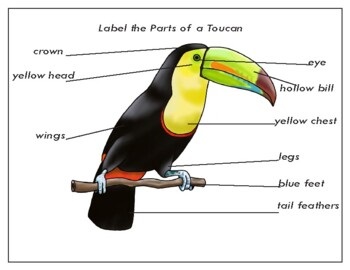
What Makes a Toucan a Toucan
Toucans have a large bill, colorful feathers, compact bodies, and strong legs. Their beak is not just for show—it’s used for grabbing food, attracting mates, and regulating temperature. Toucans also have a long tongue (up to 15 cm) that’s flat and feathery. Their zygodactyl feet (two toes forward, two backward) are ideal for climbing and perching. Toucans’ vocalizations vary by species—from croaks and growls to frog-like barks.
| Physical Trait | Description |
|---|---|
| Large Beak | Lightweight, colorful, multifunctional |
| Compact Body | Helps in hopping and balance |
| Zygodactyl Feet | Good grip on branches |
| Long Tongue | Helps manipulate food |
| Colorful Plumage | Useful for mating and blending in |
Toucans Habitat Facts
Living in the Trees
Toucans are forest canopy dwellers. They rarely come down to the ground, spending most of their time high up in the trees. This keeps them safe from predators. They roost and nest in tree cavities, which they don’t dig themselves—they use old woodpecker nests. The rainforest canopy is full of fruit, perfect for their diet. In Costa Rica and other tropical countries, toucans are easy to spot on eco tours.
| Habitat Element | Description |
|---|---|
| Canopy Layer | High treetops where they eat and nest |
| Tree Cavities | Nesting spots found in hollow trunks |
| Rainforest Regions | Central & South America |
| Cloud Forests | Misty, cool forests in mountains |
| Garden Areas | Some adapt near human farms and parks |
Toucans in Central and South America
Where in the World Are Toucans Found?
Toucans are native to the Neotropics, which include Central and South America. Countries like Brazil, Venezuela, Costa Rica, Panama, Colombia, Ecuador, and Peru are rich in toucan populations. Each country may have different species depending on the habitat, such as lowland rainforests or cloud forests in higher altitudes. Toucans are especially common in the Amazon Basin, where biodiversity is the highest on Earth. In Costa Rica, they are tourism favorites!
| Region | Toucan Presence |
|---|---|
| Brazil | Home to the Toco Toucan |
| Costa Rica | Keel-billed and Collared Aracari species |
| Ecuador | Many species in the Amazon and cloud forests |
| Venezuela | Hosts mountain and rainforest toucans |
| Panama | Frequently seen in national parks |
Toucan Beak: Nature’s Masterpiece
Big, Bold, and Brilliant
The toucan’s beak is one of the most extraordinary features in the bird world. Despite being large, it is surprisingly lightweight because it’s made of keratin foam, similar to a sponge. The beak contains air pockets and a network of blood vessels that help with temperature control, especially in hot tropical climates. Scientists say toucans can regulate their body heat by controlling blood flow in their beak. It’s also a social tool used during courtship and to signal threats.
| Beak Feature | Function |
|---|---|
| Lightweight foam structure | Easy for birds to carry |
| Bright colors | Attracts mates or signals other birds |
| Blood vessels | Controls heat exchange |
| Fruit grabbing | Helps reach far-off food |
| Threat display | Used to scare off rivals |
Toucan Communication: Croaks, Barks & Growls
How Toucans Talk
Toucans are surprisingly vocal birds. They don’t chirp like many others—instead, they croak, bark, growl, and even sound like frogs! Each sound has meaning. A loud croak can signal danger, while a soft grunt can be used when communicating with a mate. In flocks, toucans call to each other to stay in contact. The Keel-billed Toucan is famous for its frog-like calls, while Toco Toucans bark like a small dog. These unusual sounds echo through the rainforest and help toucans stay safe and social in dense foliage.
| Vocalization Type | Description | Purpose |
|---|---|---|
| Croaks | Loud and deep | Warning signal or contact |
| Barks | Short and harsh | Defense or territory claim |
| Growls | Low and throaty | Communicating discomfort |
| Clicks | Beak snapping | Play or light threat signal |
| Calls | Series of sounds | Flock interaction or mating |
Toucan Species: A Colorful Family
Meet the Ramphastidae Birds
Toucans belong to the family Ramphastidae, and there are around 40 different species spread across four major genera: Ramphastos (true toucans), Pteroglossus (Aracaris), Selenidera (Toucanets), and Andigena (Mountain Toucans). Each species has unique plumage, bill size, and preferred habitat. For example, the Toco Toucan is the largest species with the most iconic look, while Green Aracaris are smaller and faster. These birds are classified under the order Piciformes, shared with woodpeckers and barbets.
| Group | Example Species | Key Traits |
|---|---|---|
| True Toucans | Toco Toucan | Large bill, black-and-white plumage |
| Aracaris | Green Aracari | Smaller, colorful, agile flyers |
| Toucanets | Guianan Toucanet | Compact, darker colors |
| Mountain Toucans | Andean Toucan | Found in cooler, high-altitude forests |
Keel-Billed Toucan Facts
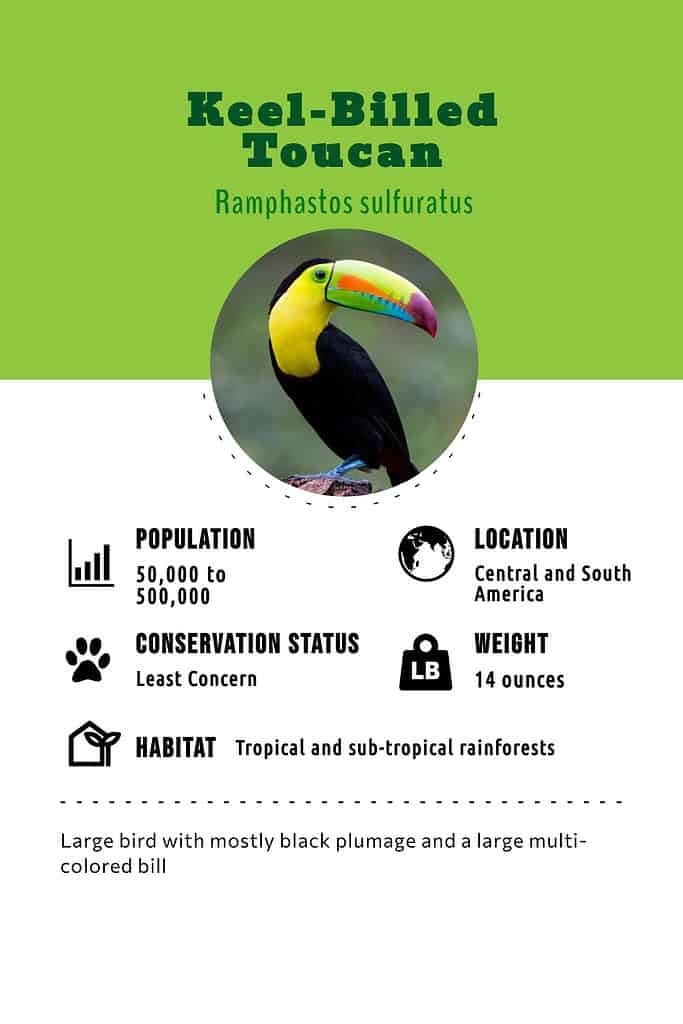
The Rainbow Beak Bird
The Keel-billed Toucan is often called the “rainbow-billed toucan” due to its stunning beak with hues of green, orange, red, and blue. It’s native to Central America, particularly Costa Rica, Panama, and Honduras. Despite its showy appearance, this toucan weighs only about 400 grams. It lives in tropical lowland forests and eats fruit, insects, and the occasional lizard. Its colorful bill looks heavy but is light and hollow. It’s also a national symbol of Belize!
| Trait | Description |
|---|---|
| Beak | Multicolored and about 1/3 body length |
| Habitat | Tropical forests in Central America |
| Weight | ~400–500 grams |
| IUCN Status | Near Threatened |
| Social Behavior | Flocks of 6–12 birds |
Toco Toucan Facts
Biggest and Most Famous Toucan
The Toco Toucan (Ramphastos toco) is the most recognizable toucan species with a massive orange-yellow beak and stark black body. Native to South America, especially Brazil, this species thrives in open woodlands and savannas. It’s known for being adaptable—even living near farms and towns. The Toco Toucan’s large bill helps regulate body temperature and is a defense tool. Its striking look has made it a pop culture icon seen in books, TV, and logos.
| Trait | Description |
|---|---|
| Beak | Bright orange with black tip |
| Habitat | Open woodlands, forest edges |
| Weight | 600–700 grams |
| Diet | Fruits, insects, small animals |
| IUCN Status | Least Concern |
Baby Toucans: From Eggs to Feathers
The Life of a Toucan Chick
Toucans are monogamous and nest in tree holes. A pair will raise 2–4 chicks per breeding season. The female lays white eggs, and both parents take turns incubating them for about 16–20 days. Baby toucans hatch blind and featherless, relying on their parents for warmth and food. Their beaks are tiny at first and grow over time. Fledging occurs around 6–8 weeks, after which the chicks begin exploring branches. Raising young requires teamwork, and toucan parents are very attentive!
| Baby Toucan Stage | Details |
|---|---|
| Eggs | Laid in tree cavity, 2–4 per clutch |
| Hatchlings | Blind, naked, fed by parents |
| Beak Growth | Starts small, grows with age |
| Nesting Period | 6–8 weeks |
| Parental Care | Shared equally by both adults |
Toucan Plumage: Colorful and Camouflaged
Bright Feathers That Blend In
Though toucans are known for their colorful bills, their plumage is also a mix of vivid and dark shades. Most toucans have black feathers with patches of red, yellow, white, blue, or green. This contrast helps them blend into the rainforest’s shadows and sunlit areas. Their feathers are soft and waterproof, helping them stay dry in rainforests. Plumage patterns also help species recognize one another and attract mates.
| Color Area | Purpose |
|---|---|
| Bright Chest Patch | Attract mates |
| Dark Body Feathers | Blend into shadows |
| Blue or Green Face | Species-specific identification |
| Red or Yellow Tail | Adds to tropical appearance |
| Feather Type | Waterproof, dense for insulation |
Toucans and the Rainforest Canopy
Life in the Treetops
Toucans spend nearly their entire lives in the rainforest canopy, where they find food, nesting spots, and safety. The upper forest layer has abundant fruits and fewer predators. Toucans rarely descend to the ground unless absolutely necessary. The canopy provides thick cover, and their zygodactyl feet help them perch and move easily among the branches.
| Canopy Benefits | Description |
|---|---|
| Abundant Food | Fruit trees, insects, and flowers |
| Predator Safety | Less exposure to ground predators |
| Nesting Cavities | Often found in tall trees |
| Easy Movement | Hopping from branch to branch |
| Constant Climate | Stable temperature and humidity |
Toucans and Humans
Cultural and Environmental Impact
Toucans are celebrated symbols in South America, representing joy, beauty, and the rainforest. They are mascots for eco-tourism, often featured in nature tours and educational campaigns. Sadly, they’re also targeted by the exotic pet trade, which harms wild populations. Conservationists and organizations like PBS Nature and SeaWorld work to educate people about toucan conservation and discourage illegal wildlife trade.
| Human Interaction Type | Impact |
|---|---|
| Eco-tourism | Raises awareness and funds |
| Pet Trade | Decreases wild populations |
| Education | Helps children learn biodiversity |
| Research | Leads to habitat protection |
| Art and Culture | Toucans as symbols of rainforest |
Toucans’ Zygodactyl Feet
Feet Perfect for the Forest
Toucans have zygodactyl feet—two toes face forward and two face backward. This unique structure allows for a strong grip on branches, even when sleeping or moving quickly through the trees. Their feet help them balance while reaching for food or feeding chicks in narrow tree holes.
| Feature | Advantage |
|---|---|
| 2-2 Toe Layout | Strong grip for perching |
| Flexibility | Allows turning and grasping |
| Balance Aid | Stable while stretching or hopping |
| Climbing Tool | Helps them ascend tree trunks |
| Sleeping Support | Prevents falling from branches |
20. Toucans and Climate Change
A Warming World’s Impact
Climate change is altering rainforests—shifting rainfall, increasing temperatures, and changing flowering times. Since toucans rely on specific fruiting trees, they are sensitive to these changes. If certain fruits bloom earlier or disappear, toucans may face food shortages. Warming climates may also force species like the Mountain Toucan to move to higher, cooler altitudes, where space is limited.
| Climate Effect | Impact on Toucans |
|---|---|
| Rising Temps | Forces migration to cooler areas |
| Habitat Shift | Less suitable rainforest habitat |
| Fruit Changes | Scarcity or timing mismatches |
| Disease Spread | New parasites in warm climates |
| Nesting Disruption | Changed breeding seasons |
Toucan Tongue: Long and Feathery
A Tongue Like a Feather
Toucans have remarkably long tongues—almost the length of their beak! Their tongues are flat, narrow, and feather-like, allowing them to manipulate and swallow food with ease. The tongue helps scoop up fruit or bugs and slide them down the throat. Its texture is sensitive, assisting in taste and food texture detection.
| Feature | Function |
|---|---|
| Length | Up to 15 cm in large species |
| Feathery Texture | Helps grip slippery fruit |
| Flexibility | Allows food manipulation |
| Sensitivity | Detects taste and food consistency |
| Beak Companion | Works in coordination with beak |
Toucan Weight and Size
How Heavy Are Toucans?
Toucans vary in size from 130 grams (small toucanets) to about 700 grams (Toco Toucan). Their body is compact, but the beak makes them look larger. Despite its size, the beak is light due to its hollow structure. Their size helps them glide and hop rather than fly long distances.
| Species | Weight | Size (Length) |
|---|---|---|
| Toco Toucan | ~700 grams | Up to 65 cm |
| Keel-billed Toucan | ~450 grams | ~45–50 cm |
| Aracari Species | ~130–250g | ~30–40 cm |
| Toucanet | ~180–250g | ~30 cm |
| Mountain Toucan | ~300–500g | ~40–50 cm |
Toucans in India?
Can You See Toucans in India?
Toucans are not native to India. These birds are only found in Central and South America. However, some toucans are seen in Indian zoos or aviaries. People sometimes mistake hornbills, which are native to Asia and look similar, for toucans. The two are not closely related but evolved similar traits through convergent evolution.
| Question | Answer |
|---|---|
| Native to India? | No |
| Seen in Zoos? | Yes, rarely |
| Look-alike species | Hornbills |
| Evolution Type | Convergent |
| Pet Legality | Exotic pet trade is illegal |
Toucan Survival Strategies
How Toucans Stay Alive
Toucans rely on camouflage, agility, and flock behavior to survive. Their dark feathers help them blend into the canopy, and they stay quiet when predators are nearby. When threatened, toucans bark loudly or fly off in bursts. Flocking in small groups gives them extra eyes to detect danger. Their nests in tree cavities protect chicks from many predators.
| Strategy | Purpose |
|---|---|
| Camouflage | Avoid detection in foliage |
| Loud calls | Warn flock of danger |
| Tree cavity nests | Protects eggs and chicks |
| Flocking | Safety in numbers |
| Agility | Quick hops and glides |
The Ultimate Toucan Trivia
| Fact Group | Examples Included |
|---|---|
| Diet & Feeding | Tossing fruit, eating eggs/insects |
| Physical Traits | Beak, tongue, colorful feathers |
| Behavior | Flocking, nesting, calling |
| Habitat | Canopy dwelling, rainforests |
| Conservation | Endangered status, pet trade, IUCN levels |
30 Interesting Facts About Toucans
Toucans are full of surprises! Here are 30 fun, strange, and educational facts every kid will love:
- Toucans have huge bills—sometimes bigger than their entire head!
- Their beaks are hollow, so they’re much lighter than they look.
- Toucans mostly eat fruits, but they’ll also snack on insects, eggs, and small lizards.
- They can’t fly very far—they glide from tree to tree using quick wing beats.
- The Toco Toucan is the largest of all toucans.
- Toucans use their bills to regulate body temperature like a natural air conditioner.
- They have zygodactyl feet—two toes face forward and two backward—for a strong grip.
- Baby toucans are born blind, featherless, and helpless.
- Toucans live in tree holes, often ones made by woodpeckers.
- They use their bills to toss food into the air and catch it in their mouths.
- The Keel-billed Toucan has a bill with up to five different colors!
- Toucans sleep by turning their heads backward and tucking their beaks under feathers.
- Toucans can live up to 20 years in captivity.
- Toucans have a long, feathery tongue—as long as their beak!
- They are native only to Central and South America.
- Toucans often live in small groups or flocks of 6 to 12 birds.
- Their calls sound like frogs, barking dogs, or growls.
- The toucan is the national bird of Belize.
- Toucans help spread seeds in the forest, making them important for rainforest health.
- Their bright beaks are also used to attract mates.
- Toucans are diurnal, meaning they’re active during the day.
- Each species has unique markings to help them identify each other.
- They’re often seen playing or beak-fencing with each other.
- Some people mistake hornbills (from Asia and Africa) for toucans.
- Despite their size, toucans are lightweight and agile.
- Toucans use vocal calls and bill clacking to communicate.
- They can live high in the Andes Mountains, like the Mountain Toucan.
- Toucans are popular in logos, commercials, and cartoons.
- Sadly, some toucans are taken from the wild for the illegal pet trade.
- Scientists think toucans evolved their big beaks to help cool down and grab food from branches.
Frequently Asked Questions (FAQs) About Speciality of Toucans
1. Are toucans friendly to humans?
Toucans are not naturally tame, but they can become used to humans in zoos or when raised in captivity. However, they are wild animals and are best left in the rainforest.
2. Why is a toucan’s beak so big?
Their beak helps with reaching fruit, attracting mates, defending themselves, and even regulating body temperature by releasing heat.
3. Can toucans fly long distances?
No. Toucans are poor long-distance flyers. They mostly hop and glide between trees using short, fast wing beats.
4. What do toucans eat besides fruit?
While they love fruit, toucans also eat insects, eggs, small reptiles, and sometimes baby birds if food is scarce.
5. Do toucans live alone or in groups?
Toucans are social birds. They live and travel in small flocks, usually between 6 and 12 individuals.
6. How long do toucans live?
In the wild, they can live around 12–15 years. In captivity, with proper care, they can live up to 20 years.
7. Where do toucans make their nests?
Toucans nest in tree cavities, usually holes left behind by woodpeckers or naturally formed in rotting trees.
8. Are toucans endangered?
Some species are near-threatened due to deforestation and illegal pet trade. Others, like the Toco Toucan, are still fairly common.
9. Can you keep a toucan as a pet?
In most places, it’s illegal to own a toucan without special permits. Wild toucans belong in the rainforest, not homes.
10. Do toucans migrate?
No, toucans are non-migratory birds. They stay in their tropical forest homes year-round and don’t travel long distances.
